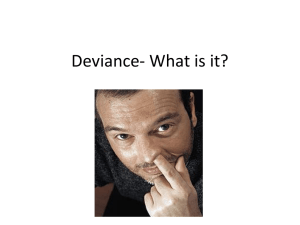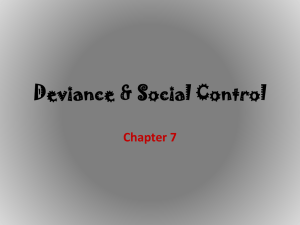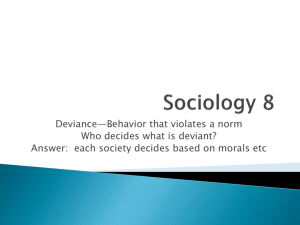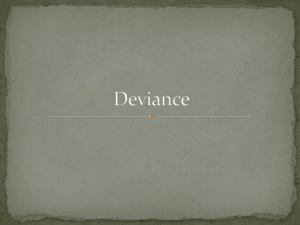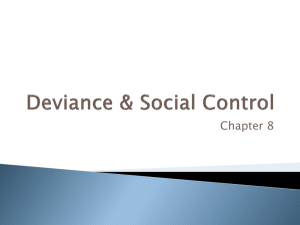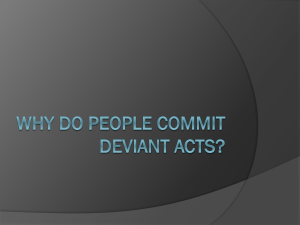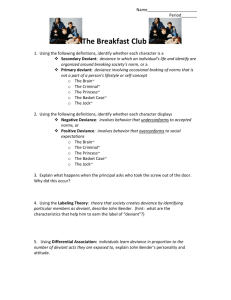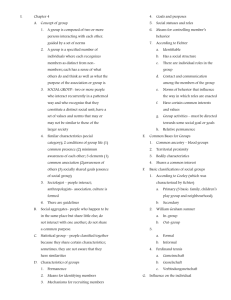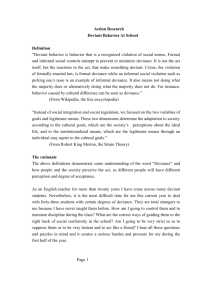Deviance- Behavior that violates significant social norms
advertisement
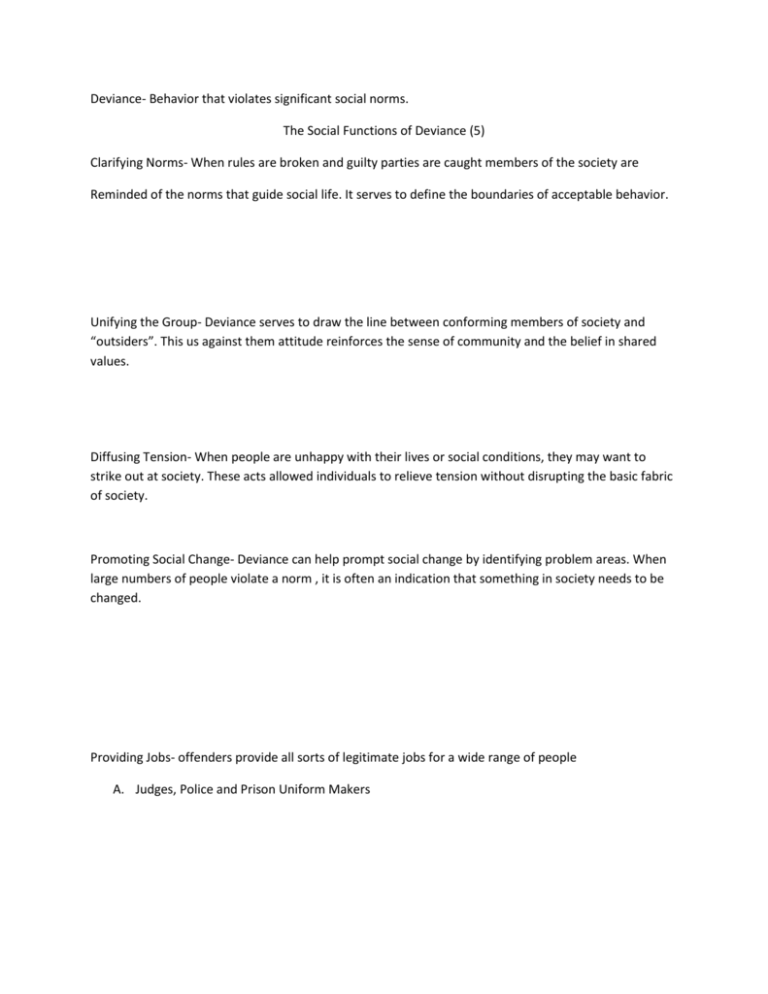
Deviance- Behavior that violates significant social norms. The Social Functions of Deviance (5) Clarifying Norms- When rules are broken and guilty parties are caught members of the society are Reminded of the norms that guide social life. It serves to define the boundaries of acceptable behavior. Unifying the Group- Deviance serves to draw the line between conforming members of society and “outsiders”. This us against them attitude reinforces the sense of community and the belief in shared values. Diffusing Tension- When people are unhappy with their lives or social conditions, they may want to strike out at society. These acts allowed individuals to relieve tension without disrupting the basic fabric of society. Promoting Social Change- Deviance can help prompt social change by identifying problem areas. When large numbers of people violate a norm , it is often an indication that something in society needs to be changed. Providing Jobs- offenders provide all sorts of legitimate jobs for a wide range of people A. Judges, Police and Prison Uniform Makers B. C. Providing jobs Example: Workers at clothing manufactures might make prison uniforms as well as other types of clothes. D. Promoting Social Change: When someone is dealing with a problem they try to solve to make things better. E. Diffusing Tension Example : Participating in unauthorized demonstrations allows people to express political or social discontent without destroying the social order. F. Clarifying Norms : Person might choose to not commit deviant acts if they are aware of how serve the consequences of those acts will be. G. Ex. Picture of Unifying the group : there working as a group Perspectives of Deviance Functionalist View 1. What is the strain theory? It is where you views deviance as the natural outgrowth of the values , norms , and structure of society. A. How do individuals respond to culturally approved goals and the legitimate means of achieving them? Individuals may be prevented from finding a job because of social conditions or because they lack an adequate education. They are expected to meet this goal , and society judges them according to how well they do so. Conflict View 1. What is the conflict view? 2. Answer - They believe that competition and social inequality lead to deviance. A. Who decides what is deviant? Why is the lower class most affected? B. The ruling classes because they have the most power. Lower classes are affected because they are often forced to commit acts defined as deviant. To protect their power the ruling classes then establish ideologies belief systems that explain deviance as a problem found primarily among the lower classes. Interactionist View 1. List and briefly explain the three Interactionist theories. 2. Control theory explains deviance as a natural occurrence. Cultural transmission theory It explains deviance as a learned behavior. Labeling theory focuses on how individuals come to be identified as deviant. A. Why do people conform to norms? If a person associations are primarily with individuals who conform to society’s norms , that person is most likely to conform. B. How do people learn conformity or deviance? People become deviant behavior occurs in primary groups. People become Deviants or conformist in the same way that they become fluent in a particular Language. C. Where does this learning mainly occur? They learned through the process of social interaction acts as a block on the controls the discourage deviant behavior. D. How do people become identified as deviant? In some kind of public setting such as a trail the individual is denounced , found guilty , and given the new identity of deviant.


